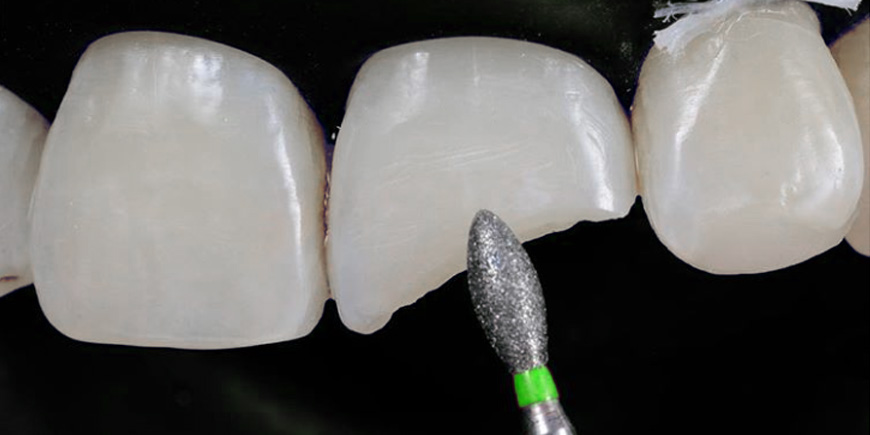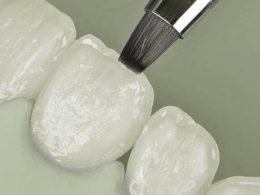Table of Contents
Many people, when chewing ice or hard candy, have found themselves in the situation of experiencing something hard and strange in the mouth, something that does not melt or dissolve within minutes. The big surprise is that when they take it out and inspect it, they realize that it is a piece of tooth.
Although the enamel that covers the teeth is the hardest and most mineralized tissue in the body, its resistance has limits. Falling down, getting hit in the face, or biting something excessively hard; particularly if a tooth already has cavities, it can cause it to chip or fracture. If that happens, do not be alarmed, but seek professional help immediately; since there are many ways to solve it and avoid greater evils.
Emergency Measures
As we said, if one of your teeth is broken, chipped, or fractured; visit us as soon as possible. Otherwise, your tooth could be further damaged, or infected, putting its vitality and permanence in the mouth at risk.
In the meantime, take the following self-care measures:
- If you feel pain, take acetaminophen or another over-the-counter pain reliever. Rinse your mouth with salt water.
- If the break has left a sharp or uneven edge, cover it with a piece of paraffin wax or sugarless gum; to avoid cutting your tongue or the inside of your lips or cheeks.
- When eating, eat only soft foods and avoid biting with the affected tooth.
Treatment of a chipped or broken tooth will depend on the severity of the damage. If only a small piece of enamel is broken, the repair can usually be done in a single office visit. A badly damaged or fractured tooth may require longer and more expensive procedures. Here are some of the ways we can repair a chipped or broken tooth.
Adhesive Filling
If only a small piece of tooth enamel has come off, we can repair the damage with a simple direct technique filling. If the repair is on a front tooth or that is highly visible when smiling, we will probably apply a procedure known as bonding, which uses a tooth-colored dental resin or composite.
Adhesion is a simple procedure and often does not even require anesthesia. To prepare the tooth, our Specialist first etches its surface with a liquid or gel acid to create roughness and make the adhesive material (bonding agent) adhere to it. Next, she applies the material and several coats of a composite of the appropriate color. After the material is shaped into a plastic state to look like a natural tooth, an ultraviolet light is used to polymerize or harden it.
Finally, it is polished with pastes and stones or special very fine-grained discs, to achieve a surface as smooth and shiny as that of other teeth.
Dental Veneer
If an incisor or front tooth is badly broken or chipped, a dental veneer can make it look full and healthy again. A veneer is a very thin, tooth-colored layer of composite or porcelain that covers its entire buccal or labial face, much like a false nail covers a natural nail; of course with a thicker section to replace lost tooth structure.
To prepare the tooth, our Specialist will wear approximately 0.3 to 1.2 millimeters of its superficial enamel. Next, she will make an impression of the tooth to be restored so that in our laboratory the technician can make the structure by incrementally adding layers of glass ceramic (in the case of porcelain veneers).
When the veneer is ready, usually a week or two later, the patient will have to return to the office for cementing. To do this, we will first etch the surface of the prepared tooth with a liquid, to create roughnesses into which the adhesive material can penetrate. Then we apply a special cement to the veneer and carefully position it over the dental preparation. Once the veneer is stabilized, we will use a special light to activate the chemicals that make the cement harden.
Cover or Dental Crown
If the fracture is larger or the tooth has a lot of cavities, we could indicate a full-coverage dental crown, to reinforce the tooth and improve its appearance.
Permanent crowns can be made of metal, porcelain fused to metal, or all-ceramic. Each type has its advantages and disadvantages. All-metal crowns are the strongest and most resistant, but their aesthetic value is 0, which is why they are reserved only for molars. Porcelain and metal-porcelain crowns can make the restored tooth look almost the same as before.
Making a crown generally requires two or three visits to our clinic. During the first visit, we can take X-rays to evaluate the roots of the tooth and its supporting bone. If no other problems are detected, we place anesthesia and proceed to prepare the tooth stump, which consists of wearing the entire tooth, in a relatively uniform way, to provide the space necessary for the thickness of the artificial crown. If the fracture has left a large defect, we can use a filling material to reconstruct the tooth before preparing the tooth stump.
Next, we will use a putty-like material to make an impression of the arch, the prepared tooth, and the opposing teeth (which the crown will contact when biting). The impressions are sent to the laboratory where the crown is made, according to the previously defined shape, size and color specifications. Meanwhile, our team will place a temporary crown made from a plastic material called acrylic.
During the second or third visit, usually two to three weeks later, we will remove the temporary crown and verify the fit of the permanent crown; before cementing it in place. Sometimes, laboratory adjustments and touch-ups are necessary.
Could a Root Canal Treatment Be Necessary?
If a tooth fracture is large enough to expose the dental pulp (the center of the tooth that contains its nerves and blood vessels), normal bacteria in the mouth immediately infect it. If a tooth hurts, changes color, or becomes sensitive to thermal stimuli, it is likely that the pulp is compromised or infected. Pulp tissue can die and, if not removed promptly, the infection can spread to the gum and make tooth extraction necessary.
A root canal treatment involves removing the dead pulp, disinfecting the root canal, and then sealing it with a biocompatible material.
Most root canal treatments are not painful as long as they are done as soon as possible, before the infection spreads and takes shape.
“As Long As the Root of a Tooth Is in Good Condition, it Is Enough to Be Able to Restore It, Even if Its Entire Clinical Crown Has Been Lost”.
DENTAL TIP
What Is a Dental Post and Core?
If all the visible part or crown of the tooth is lost, but the root is preserved intact and in good condition, our Prosthodontic Specialist will be able to place a pin or post inside the root canal, and then, build a superstructure on which it can be done and fix a crown.
There are many types of post and cores, but the most commonly used are metal castings and fiberglass ones. The important thing is to know that if the root of the tooth is in good condition and the fracture of the tooth has not extended below the gum margin, it is enough to be able to restore the tooth, even if all its clinical crown has been lost.
Take Care of Your Health by Saving Money!
DENTAL VIP has years of experience in helping patients get the best possible treatment at the best possible price, by travelling to Venezuela for their dental makeover. Whether you wish to rule out any oral injury, have a biopsy, undergo maxillofacial surgery or rehabilitate your entire mouth, it is amazing how much can be done in a short space of time with the right dental team and technology.
If you have never travelled to Caracas before we can quite literally organize your whole dental trip. From your initial quotation, sourcing your flight tickets and hotel along with getting you to DENTAL VIP to undergo your treatment and back to your hotel again. It is our job to make this easy for you, just as we already have for hundreds of patients across the globe.
Being the largest facilitator of dental treatment in Venezuela, we are known in the industry for our quick and professional response. Get in touch today via WhatsApp +58 414-9033547, social networks or Email to find out how we can help you regain your health and achieve the confident smile you have always wanted.












